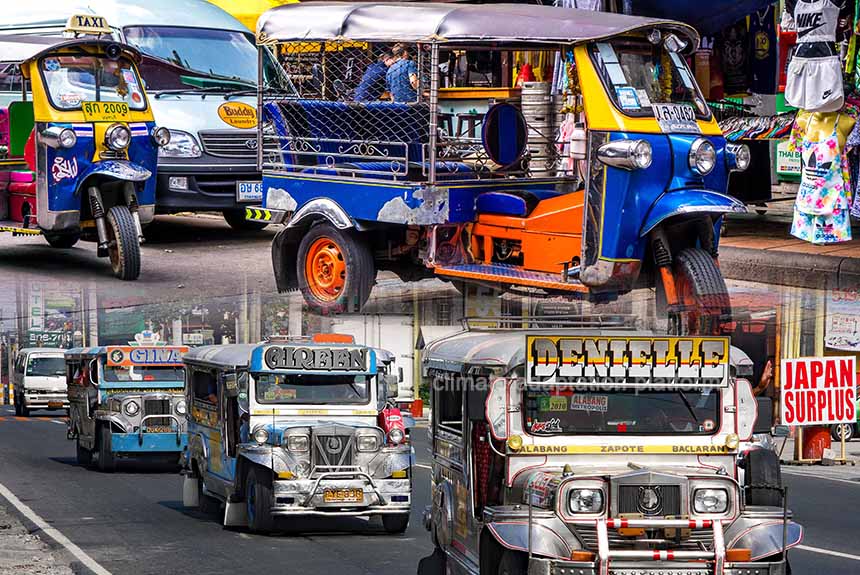Informal transportation is common in developing countries because they have limited public transport services. These refer to transport systems with fixed routes and timetables legislated and regulated by the government.
Instead, countries in the global south rely on informal transport systems with variable routes, no official departure times or stops, and a timetable. They arise because they fill the gap in demand for public transport where the government fails to meet the community’s needs.
Informal transportation is common in countries like the Philippines, Kenya, Ghana, Bolivia, and across South and Southeast Asia.
Depending on the country, informal transportation comes in various names and types ranging from 30 to 70-seater buses to 1 to 2-seater motorbike taxis.
They are called “boda bodas” in eastern Africa, “matatus” in Kenya, “jeepneys’’ minibus-like public utility vehicles, in the Philippines, “dala-dalas” in Tanzania, “tro-tros” in Ghana, “trufis” in Bolivia, and “tuk-tuks” across South and Southeast Asia.
They have also emerged in high-income countries like the US. New York City has “dollar vans” that offer affordable commutes in predominantly low-income communities.
A study published in Research Gate presents the difference between formal and informal transportation:

According to the WRI, informal transportation, also called “semi-formal”, “paratransit”, or “popular” transport, has a great potential to fight climate change mainly because of its higher fuel efficiency than private cars and its ability to transport higher numbers of passengers which can improve traffic management in urban centres, benefiting both road safety and air quality. But they also have drawbacks in some places, such as congestion on high-demand routes where providers compete for passengers.
Informal transportation systems are essential in low- and middle-income countries; they represent between 50% and 95% of their transportation services. However, data on fleet sizes, emissions, routes, and ridership is currently lacking.
The article notes how governments in growing economies can improve their informal transportation systems to maximise their benefits, including providing livelihoods to operators while providing affordable transport options, improving commuters’ experience, and reducing emissions.
These suggestions include (1) Collecting consistent data on emissions and operations, (2) Providing targeted policy support and finance, and (3) Electrifying informal vehicle fleets.
Click the link to read the article: From Minibuses to “Boda Bodas,” Informal Transport Systems Could Be an Untapped Climate Change Solution.
Source:
Kustar, A., Tun, T., & Welle, B. (2023 November 7). World Resources institute. Retrieved from https://www.wri.org/insights/informal-transport-climate-benefits?



Leave a Reply